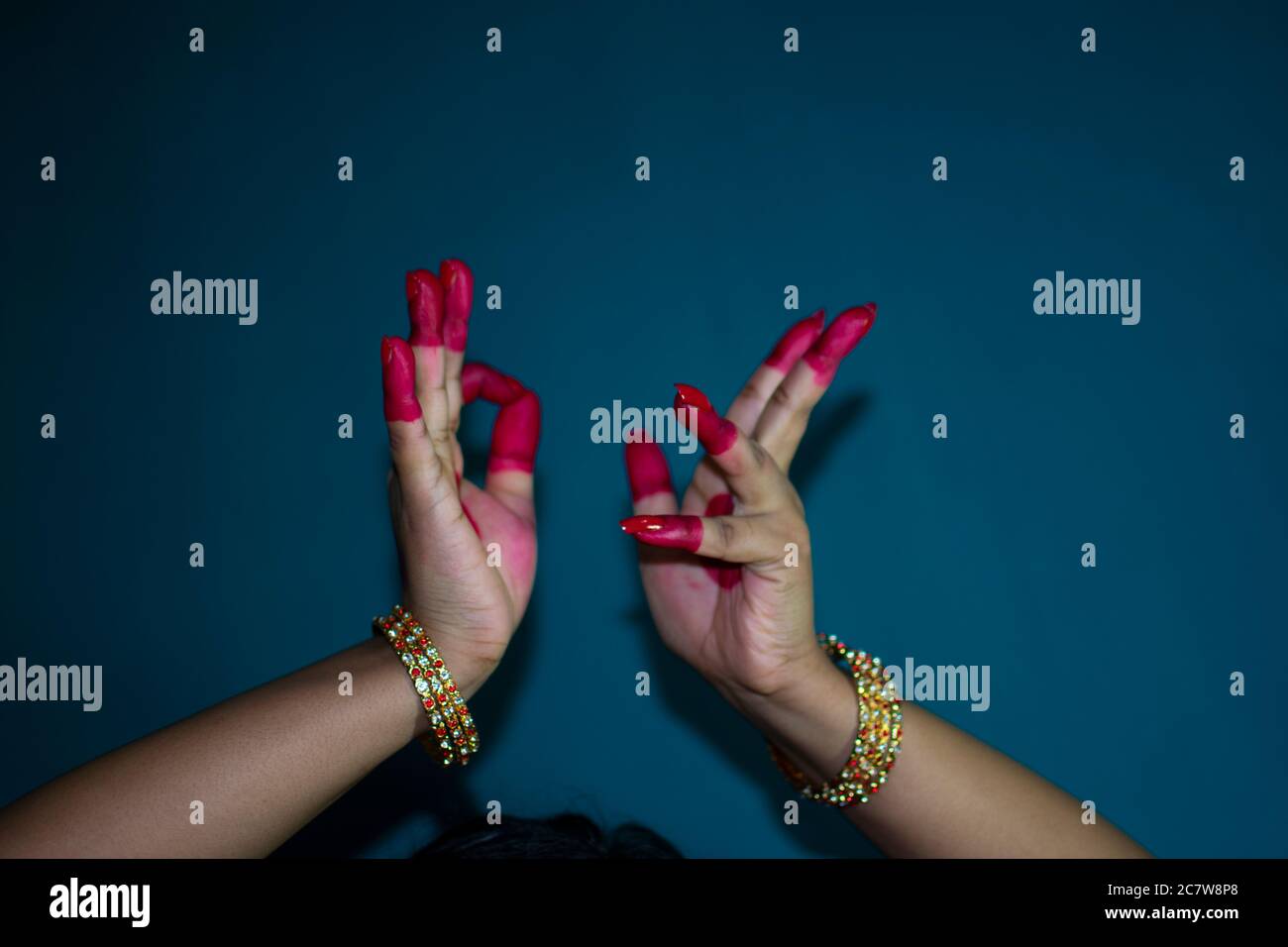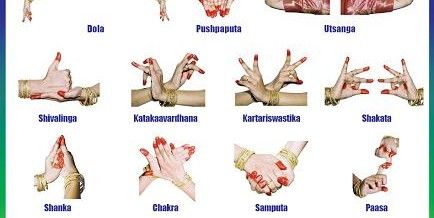By Natyakriya Bharanatyam Hasta Mudra – Single Hand or Both Hand Gestures One of the most striking aspects of an Indian Classical Dance is the use of hand gestures, also known as Hasta Mudra (read: Huss-tha mu-dh-raa). In order to convey the meaning of what a dancer is performing, hand gestures are a significant addition to facial expressions. Bharatanatyam Mudras are the core part of learning this dance form. It is one of the oldest classical dance forms in India constitutes a rich cultural representation and the depiction of mythological beliefs of our country. This dance form of South India has now got its acclamations across the globe for its elegance and finesse.

Today we will be learning the Samyutha Hasta verses from Mr. Santosh Kumar.
Here is the verse…
Anjalishcha kapothashcha karkata svasthikasthathaa
dolahasthah pushpaputaha uthsangah shivalingakaha
katakaavardhanashchaiva karthareesvasthikasthathaa

shakatam Shanka Chakrecha samputah paasha keelakau(keelako)
mathsyah koormo varaahashcha garudo naagabandhakaha
khatvaa berundakaakeshcha avahithasthathatheivacha
Bharatanatyam Mudras Chart


Note:
There can be slightly different readings of the above verse. For eg.
The last line may be taught as “khatvaa berundakaakeshcha ithyethe avahitha samyutha kara” depending on the reading used.
In the next session, we will have checkpoint test no.2. So please work on what has been taught so far..
Best wishes…
Bharatanatyam Mudras Meaning
Filed under: Abhinaya Darpana, Hastas, instruction, lesson, Mudras, online, practice, Session, Sloka, student, teaching, theory, Uncategorized | Tagged: Samyutha hastas, Sankyutha hastas | 2 Comments »